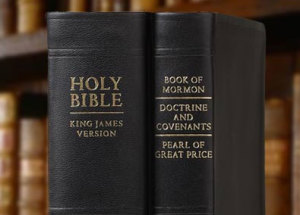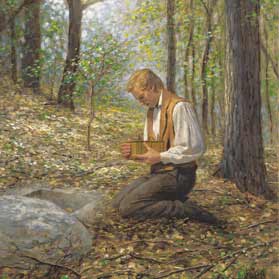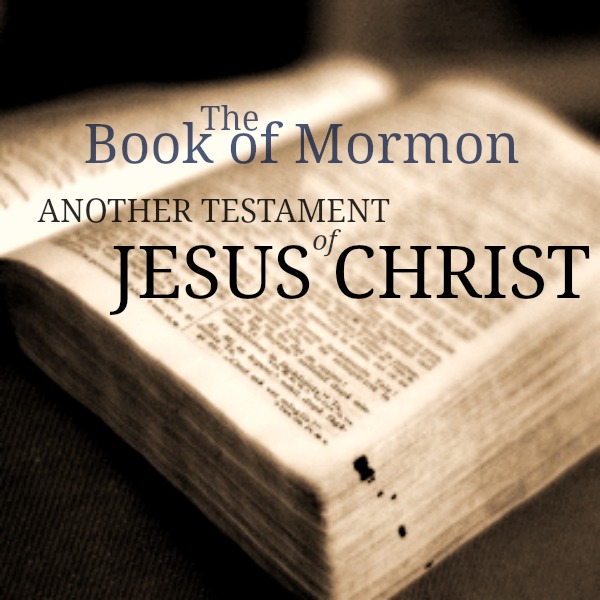Members of The Church of Jesus Christ of Latter-day Saints revere the Book of Mormon as a sacred volume of scripture which is comparable to the Holy Bible. The contents of the book substantiate that it is indeed Another Testament of Jesus Christ.
Latter-day Saints testify that the Bible and the Book of Mormon are the Word of God, and that the Book of Mormon is not intended to supersede the sacred teachings found in the Bible, but rather, the teachings found in the Book of Mormon help to enrich the comprehension of the avid student of the scriptures.
Nevertheless, there still exist several misunderstandings and myths about the Book of Mormon. In her 12 November 2014 LDS Living.com article titled “Debunking 5 Myths about The Book of Mormon,” Danielle Beckstrom carefully analyzes a few of the common misconceptions about the Book of Mormon.
Refuting the Myths about the Book of Mormon
 There are people of other faiths who believe that Mormons do not believe in the Bible, because they include the Book of Mormon as part of the scriptures that they use. However, the 8th Article of Faith of The Church of Jesus Christ teaches, “We believe the Bible to be the word of God as far as it is translated correctly; we also believe the Book of Mormon to be the word of God.”
There are people of other faiths who believe that Mormons do not believe in the Bible, because they include the Book of Mormon as part of the scriptures that they use. However, the 8th Article of Faith of The Church of Jesus Christ teaches, “We believe the Bible to be the word of God as far as it is translated correctly; we also believe the Book of Mormon to be the word of God.”
Beckstrom points out in her article that Mormons “not only have The Book of Mormon, we have the Doctrine and Covenants (a book of revelations given to the Prophet Joseph Smith and succeeding prophets), words from modern day prophets, and the Pearl of Great Price (selections of both ancient and modern materials that touch on significant doctrines, many unique to our faith).” Even though Mormons use other sacred writings as part of the foundation of their doctrinal beliefs, they still have a deep abiding reverence for the Holy Bible and reference it frequently in their teachings, as well as their personal study. Beckstrom also points out that the additional scriptures are used to support, enhance, and in many instances “clarify ambiguous doctrines found in the Bible.”
She succinctly answers the question of whether or not Mormons have their own translation of the Bible thusly:
While we fully believe that the Bible contains divine revelation from God, we also understand that it was recorded and later translated by men who make mistakes. As a result, the Prophet Joseph Smith provided more accurate translations of key verses and chapters in the Bible. So, though Mormons use the King James Version of the Bible, we have footnotes and appendixes that provide Joseph Smith’s translations.
 Another myth about the Book of Mormon is that the book was written by Joseph Smith or Mormon. However, a careful study of the volume reveals that it was not written by one man. The book actually contains the accounts of four separate records which were written by prophets of God living from about 2200 BC to AD 450. One of those ancient prophets, Mormon, compiled the majority of the records, and his son, Moroni, completed the work. Joseph Smith was later called of God to translate the ancient scriptures.
Another myth about the Book of Mormon is that the book was written by Joseph Smith or Mormon. However, a careful study of the volume reveals that it was not written by one man. The book actually contains the accounts of four separate records which were written by prophets of God living from about 2200 BC to AD 450. One of those ancient prophets, Mormon, compiled the majority of the records, and his son, Moroni, completed the work. Joseph Smith was later called of God to translate the ancient scriptures.
If people believe that myth concerning the authorship of the Book of Mormon, then they are apt to believe that Mormons worship Joseph Smith or Mormon. Mormons, however, do not worship any man. The official name of the Church – The Church of Jesus Christ of Latter-day Saints – is a testimony to the world that the One whom Latter-day Saints worship and adore is the Lord Jesus Christ, for it is His Church and not the church of any man. The Savior Himself admonished the disciples concerning this matter as recorded in the Book of Mormon in 3 Nephi 27:7-8:
Therefore, whatsoever ye shall do, ye shall do it in my name; therefore ye shall call the church in my name; and ye shall call upon the Father in my name that he will bless the church for my sake. And how be it my church save it be called in my name? For if a church be called in Moses’ name then it be Moses’ church; or if it be called in the name of a man then it be the church of a man; but if it be called in my name then it is my church, if it so be that they are built upon my gospel.
The full name of the volume of scripture – The Book of Mormon: Another Testament of Jesus Christ – also attests to the fact that Latter-day Saints worship God, the Eternal Father, and His Son, Jesus Christ.
There are also those who purport that the language of The Book of Mormon is historically inaccurate. In her article “Debunking 5 Myths about The Book of Mormon,” Beckstrom shares what she has learned about the language of the Book of Mormon:
The symbolism, sentence-structure, and language of The Book of Mormon is far removed from the writing style of early 19th century America. In fact, BYU professor of Islamic Studies and Arabic Daniel C. Peterson states that “rigorous statistical analysis strongly indicates that neither Joseph Smith nor any of his known associates composed the English text of the Book of Mormon. In fact, research suggests that the book was written by numerous distinct authors” (“Mounting Evidence for the Book of Mormon”). The fact that many of the names or words in The Book of Mormon are unlike those of biblical accounts actually enhances The Book of Mormon’s historical accuracy because many of the accounts from The Book of Mormon were written at a time and place far removed from those of the Bible. Besides, historic evidence supporting the accuracy of these names still exists. For example, the names Sariah and Nephi have been found in ancient Jewish documents dating from the time and place where these Book of Mormon figures lived.
The Prophet Mormon in the Book of Mormon as recorded in Mormon 9:32-34 wrote:
And now, behold, we have written this record according to our knowledge, in the characters which are called among us the reformed Egyptian, being handed down and altered by us, according to our manner of speech. And if our plates had been sufficiently large we should have written in Hebrew; but the Hebrew hath been altered by us also; and if we could have written in Hebrew, behold, ye would have had no imperfection in our record. But the Lord knoweth the things which we have written, and also that none other people knoweth our language; and because that none other people knoweth our language, therefore he hath prepared means for the interpretation thereof.
One other myth surrounding the Book of Mormon is that Native American DNA proves that The Book of Mormon can’t be true. Numerous scholars support the land bridge migration theory that basically implies that Native Americans migrated over a land bridge connecting Siberia and Alaska. This theory, they proclaim, disproves The Book of Mormon account that some Native American ancestors crossed over the Atlantic to America.
Beckstrom concludes her article by emphatically stating:
The Book of Mormon does not contradict the land bridge migration theory. The Book of Mormon never claims that the people it describes were either the only or even the predominant inhabitants of America. In fact, “clues in its text hint at the presence of other groups” (“Book of Mormon and DNA Studies“). The Book of Mormon only provides an account of one group among many throughout history who have discovered and migrated to the American continents.
Although there continue to be many myths circulating about the Book of Mormon, it continues to stand as an ensign to the world that it is as its name proclaims – Another Testament of Jesus Christ.
About Keith L. Brown
Keith L. Brown is a convert to The Church of Jesus Christ of Latter-day Saints, having been born and raised Baptist. He was studying to be a Baptist minister at the time of his conversion to the LDS faith. He was baptized on 10 March 1998 in Reykjavik, Iceland while serving on active duty in the United States Navy in Keflavic, Iceland. He currently serves as the First Assistant to the High Priest Group for the Annapolis, Maryland Ward. He is a 30-year honorably retired United States Navy Veteran.


 Watch a video about the restoration of the gospel on lds.org
Watch a video about the restoration of the gospel on lds.org